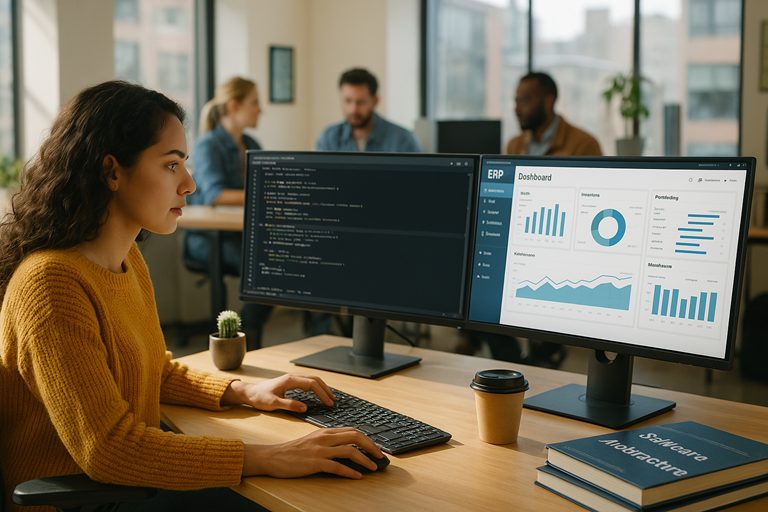
Status: Final Blueprint
Author: Shahab Al Yamin Chawdhury
Organization: Principal Architect & Consultant Group
Research Date: July 26, 2024
Version: 1.0
1. The Strategic Imperative for Modernization
Application modernization is a critical business initiative to update legacy software, aligning it with current business needs to enhance performance, improve customer experience, and accelerate time-to-market. The primary drivers are not just technological but strategic, aimed at transforming an organization’s digital core.
Core Business Drivers:
- Cost Optimization: Legacy systems can consume up to 80% of IT budgets on maintenance alone. Modernization reduces these costs by shifting from on-premises capital expenditures (CapEx) to a more flexible cloud-based operating expense (OpEx) model.
- Agility & Speed: Monolithic legacy systems hinder rapid development. Modern, microservices-based architectures enable faster, more frequent updates, which is critical for market responsiveness.
- Security & Compliance: Older systems are significant security liabilities and often fail to meet modern compliance standards like GDPR or HIPAA. Modernization embeds robust, up-to-date security from the ground up.
- Scalability & Performance: Cloud-native applications can scale automatically to meet fluctuating demand, a capability that is a key driver for 94% of modernization initiatives.
- Innovation: Modernization provides the foundation for leveraging new technologies like AI and Machine Learning, unlocking data from silos and enabling new, competitive business models.
The failure to modernize results in accumulating “technical debt”—the implied cost of rework from choosing easy short-term solutions—which stifles innovation and cedes competitive advantage.
2. Modernization Strategy Framework
Choosing the right strategy is crucial and depends on an application’s business value and technical condition. The “Rs of Modernization” provide a spectrum of options:
- Rehost (Lift-and-Shift): Move the application as-is to a cloud infrastructure. Best for: Speed and immediate CapEx reduction when no code changes are desired.
- Replatform (Lift-and-Reshape): Make minor optimizations to leverage cloud services (e.g., managed databases) without changing the core architecture. Best for: Gaining cloud benefits without the cost of a full rewrite.
- Refactor / Rearchitect: Significantly restructure code to become cloud-native, often breaking a monolith into microservices. Best for: Core, mission-critical applications where long-term agility is paramount.
- Rebuild: Rewrite the application from scratch on a modern platform, discarding the old codebase. Best for: When an application is critical but its technology is unsalvageable.
- Replace: Decommission the application and substitute it with a commercial SaaS solution. Best for: Commodity functions like CRM or HR where a suitable SaaS product exists.
- Retire: Decommission an application that is no longer needed. Best for: Redundant or low-value applications.
- Retain: Keep an application as-is in its current environment. Best for: Stable systems where the ROI for modernization is low.
3. The Critical Role of Business Requirements & Rules
Successful modernization is built on a deep understanding of the business logic embedded in legacy systems.
Discovering Requirements (Software Archaeology):
Legacy systems are often “black boxes” with outdated or non-existent documentation.7 To mitigate risk, teams must reverse-engineer the embedded requirements and business rules using techniques like:
- Static & Dynamic Code Analysis: Analyzing source code and runtime behavior to map dependencies and understand functionality.
- AI-Assisted Analysis: Leveraging Generative AI to automate code understanding, translate legacy languages (e.g., COBOL), and extract business rules. This can accelerate modernization timelines by up to 50%.
Harvesting and Externalizing Business Rules:
A business rule is a formal statement that constrains some aspect of the business (e.g., “A premium customer’s discount is 15%”). In legacy systems, these rules are hard-coded and scattered.
- Rule Harvesting: The process of identifying, extracting, and documenting these rules from the codebase, using automated tools to isolate business logic from technical overhead.
- Business Rule Management Systems (BRMS): The modern paradigm is to externalize these harvested rules into a BRMS. This separates the business logic from the application code, allowing business analysts—not just developers—to manage and update rules quickly. This dramatically increases business agility.
4. Execution and Measurement
A structured approach is essential for a successful modernization program.
Phased Execution Framework:
- Assessment & Planning: Inventory the application portfolio, define goals and KPIs, prioritize applications, and develop the business case.
- Design & Preparation: Conduct requirements and rules discovery, design the future-state architecture, and establish governance and change management plans.
- Implementation & Migration: Begin with a Proof of Concept (PoC) to validate the approach, then execute the modernization in iterative phases.
- Testing, Deployment & Optimization: Conduct rigorous testing, deploy the application, and use monitoring tools to continuously optimize performance against KPIs.
Measuring Success (Key Performance Indicators):
A comprehensive KPI framework is vital to track the Return on Modernization Investment (ROMI).
| Category | Key Metrics |
| Financial | ROI, TCO Reduction, Payback Period. |
| Operational & Agility | Time-to-Market, Deployment Frequency, System Uptime, MTTR. |
| Customer Experience | Customer Satisfaction (CSAT/NPS), Customer Churn Rate. |
| Security & Risk | Number of Security Incidents, Time to Remediate Vulnerabilities. |
Industry studies confirm significant returns, such as a Forrester study on Azure PaaS modernization showing a 228% ROI over three years with a 15-month payback period.
5. Strategic Recommendations
- Adopt a “Logic-First” Paradigm: Mandate a rigorous discovery phase to understand business rules before selecting technology. This de-risks the project and prevents the replication of outdated processes.
- Treat Modernization as a Continuous Initiative: Frame modernization not as a one-time project but as an ongoing process of improvement to deliver incremental value.
- Externalize Business Rules as a Strategic Asset: Use a BRMS to decouple business agility from IT release cycles, empowering the business to respond to market changes rapidly.
- Establish Formal Governance and Change Management: Modernization is a human challenge as much as a technical one. A formal governance body and a dedicated change management plan are critical for success.
- Embrace AI and Automation: Aggressively adopt AI-driven tools to accelerate every phase of the modernization lifecycle, from code analysis to testing and deployment.